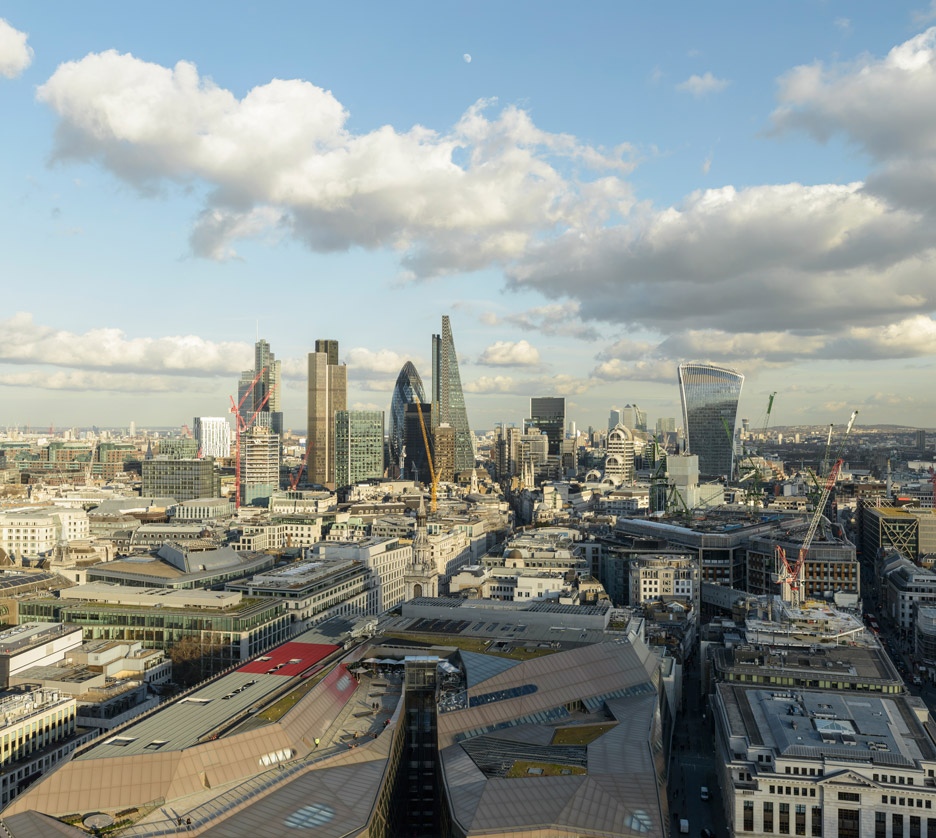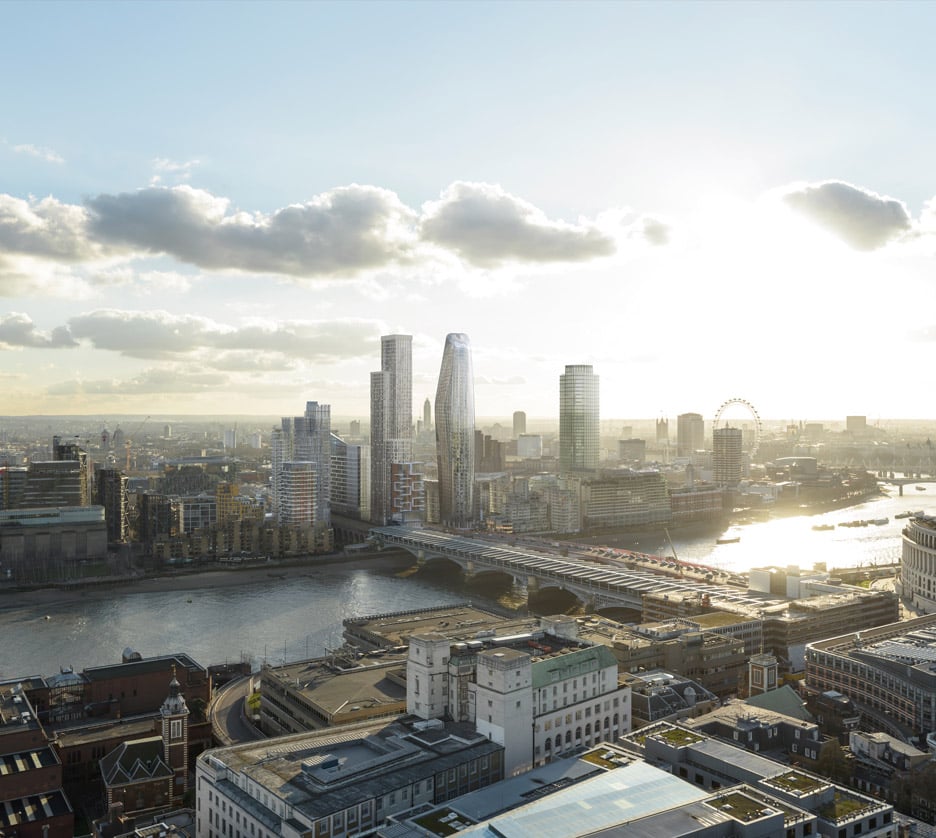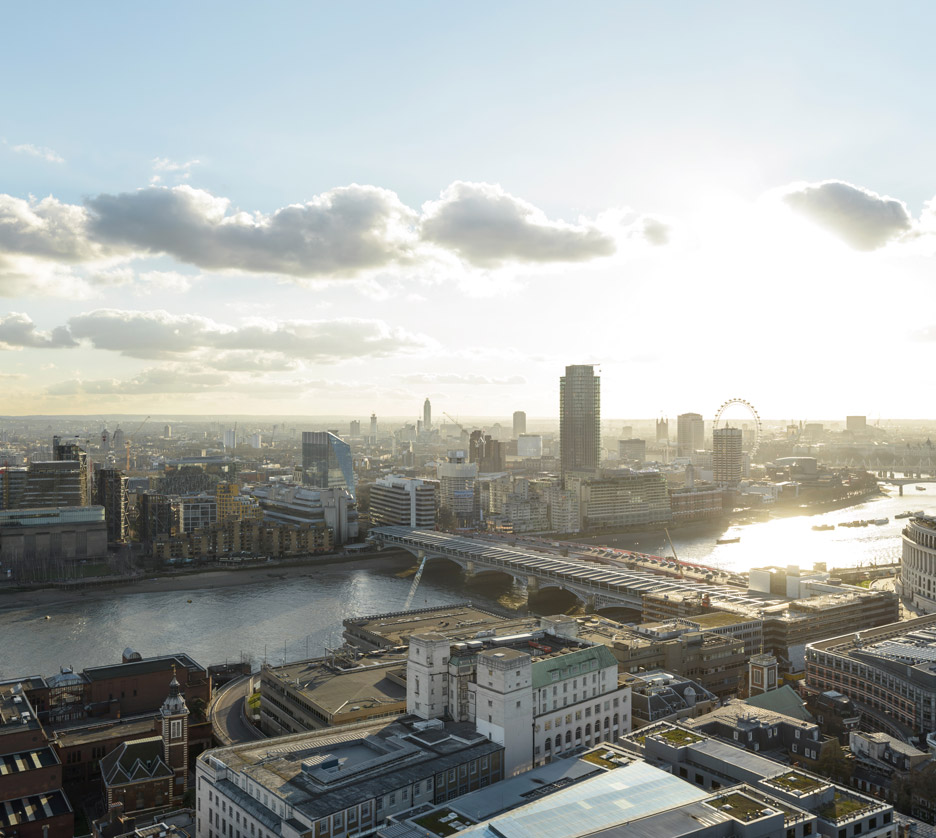London's skyscraper boom continues with 119 new towers in the pipeline
Over 100 new tall buildings have been proposed for the British capital in the last year, but only a small number are actually being built, according to the latest industry research.
A report released today by New London Architecture (NLA) reveals that, despite a widely publicised campaign to prevent the proliferation of skyscrapers in London, the number of planned high-rises has significantly increased.
A total of 119 buildings of 20 storeys or over have been proposed for the capital since this time last year, and the number of tall buildings under construction has risen from 70 to 89.

NLA chairman Peter Murray described the results as "significant" and has called for more communication from local planning departments to ensure that London residents are fully aware of the proposals.
"It is increasingly important that the planning and development community improves the way it communicates with the wider public," he said.
But he also pledged his support to well-designed skyscrapers, provided they are in strategic locations, and suggested that the situation could be better monitored through the use of digital technologies.
"We believe that well-designed tall buildings in the right place, and well-coordinated clusters, are acceptable," he added. "We continue to press for the mayor to prepare a three-dimensional computer model of the whole of London to better assess the impact of these buildings."

The sentiment is echoed by Edward Lister, London's deputy mayor of planning, who claimed tall buildings are vital to the city's future growth.
"London is in the middle of a population boom that shows no sign of slowing down and it's important we look at a range of options to achieve both the housing and workspace need," he said.
"Tall buildings can play a role in meeting some of that demand and the mayor has ordered a strategic approach to securing world-class architecture for the capital's skyline to ensure they sit well in their surroundings and are of the highest standards possible," he added.

The London Tall Buildings Survey 2016 was produced in collaboration with property consultancy GL Hearn, a subsidiary of Capita Real Estate.
It states that 94 towers were submitted for planning permission in the last year, up from 72 in the previous year. As a result, there are now 233 high-rises approved and waiting to start construction.
But the research also shows that only a small percentage of these tall buildings are actually being delivered. Sixteen were completed last year, up from six the year before.
According to Murray, the slow pace of the city's residential development will hold back many of the 436 planned towers.
"The 436 tall buildings in the pipeline is a significant number," he said. "However, with the much publicised softening of the housing market, it remains to be seen how quickly they are delivered."

But GL Hearn planning director James Cook believes the low level of construction could be down to "the significant development and investment risk required to commit to construct tall buildings".
He claimed it is difficult for any developer to deliver a skyscraper that doesn't demonstrate architectural quality.
"It is clear that delivery is a long way behind the pipeline and the planning system needs to continue to ensure any scheme that comes forward is carefully designed with architecture of the highest quality," he said.
One architecture office is behind a large percentage of the plans – Southwark-based Allies and Morrison has designed 87 of London's proposed high-rises. The firm is yet to comment.
The London borough with the most new towers in the pipeline is Tower Hamlets, with a total of 93.

NLA completed its first annual investigation into London's tall buildings in 2014. It prompted the launch of the Skyline Campaign, whose quoted aim is to "stop the devastation of London by badly designed tall buildings".
A number of skyscrapers have hit headlines since the campaign was launched. In the City of London, these include the 73-storey 1 Undershaft by Eric Parry Architects and the 62-storey 22 Bishopsgate by PLP Architecture.
Renzo Piano – the architect behind The Shard – also revealed plans for a 254-metre-tall cylindrical tower for Paddington, but withdrew his design following protests against the development, led by the Skyline Campaign.
NLA has also collaborated with visualisation experts Visualhouse to create a specially commissioned image of the future London skyline, as seen at the top of this release.
Visualisations are by Visualhouse and Dan Lowe.